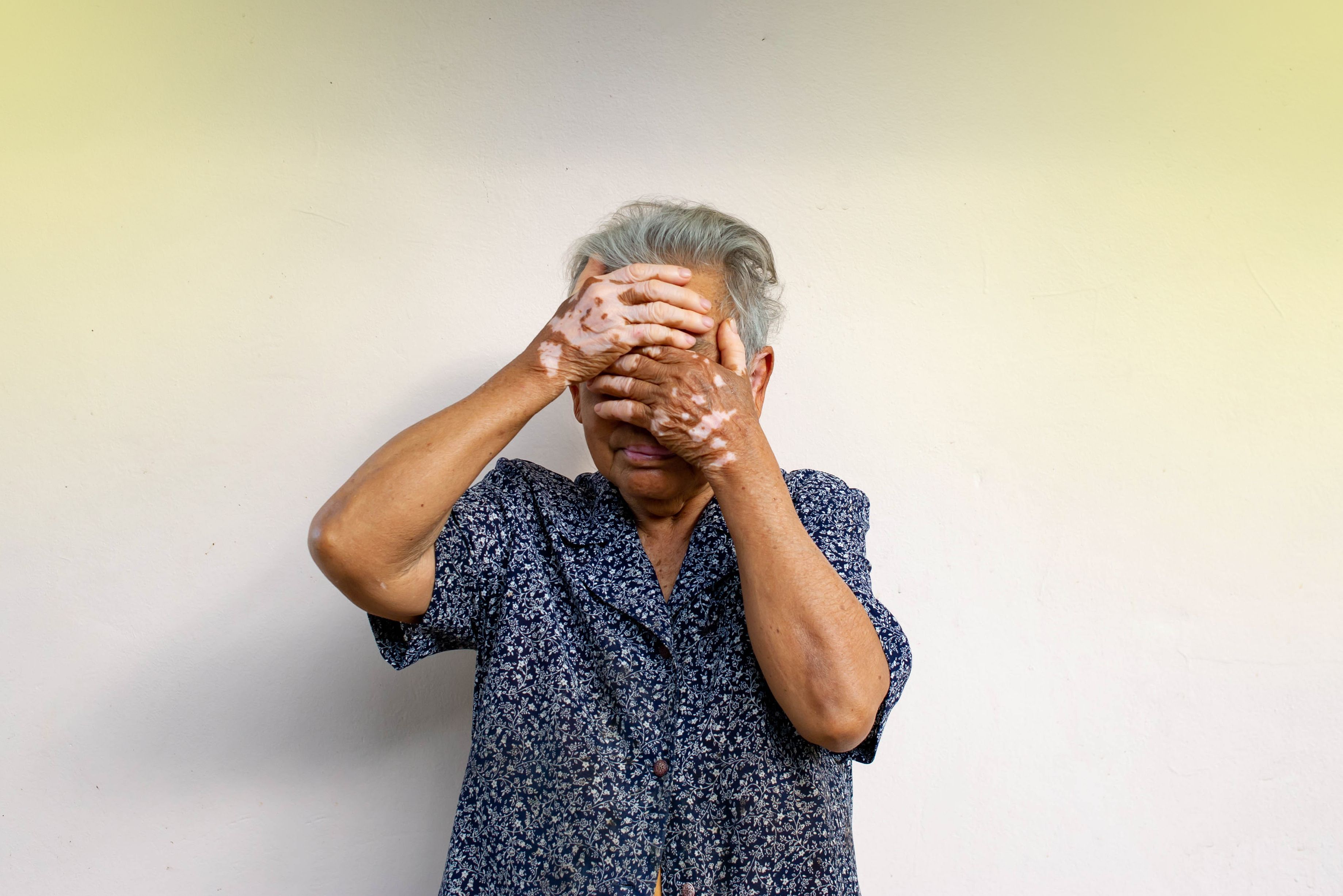
- Acne
- Actinic Keratosis
- Aesthetics
- Alopecia
- Atopic Dermatitis
- Buy-and-Bill
- COVID-19
- Case-Based Roundtable
- Chronic Hand Eczema
- Chronic Spontaneous Urticaria
- Drug Watch
- Eczema
- General Dermatology
- Hidradenitis Suppurativa
- Melasma
- NP and PA
- Pediatric Dermatology
- Pigmentary Disorders
- Practice Management
- Precision Medicine and Biologics
- Prurigo Nodularis
- Psoriasis
- Psoriatic Arthritis
- Rare Disease
- Rosacea
- Skin Cancer
- Vitiligo
- Wound Care
News
Article
Upadacitinib for Vitiligo Improves Patient Health-Related QoL After 24 Weeks
Author(s):
The promising data on upadacitinib was presented at the 2023 Revolutionizing Vitiligo Virtual Conference.
A poster presentation from the 2023 Revolutionizing Vitiligo (ReV) Virtual Conference held December 10, 2023, explored upadacitinib’s (Rinvoq; AbbVie) ability to improve patient-reported health-related quality of life (HRQoL) in adult patients with non-segmental vitiligo. Overall, Ezzedine et al found that upadacitinib 22 mg may improve patient HRQoL and perceptions of vitiligo noticeability. The study authors noted that assessment of HRQoL is necessary to evaluate patients’ experiences with social stigma, low self-esteem, anxiety, and depression often associated with vitiligo.
In the 52-week, phase 2 multicenter, randomized, double-blind, placebo-controlled, dose-ranging study (NCT04927975), adult patients aged 18 to 65 years with non-segmental vitiligo and a Facial Vitiligo Area Scoring Index score ≥0.5 and a Total Vitiligo Area Scoring Index score ≥5 at baseline were included. During a 24-week, double-blind, placebo-controlled treatment period (period 1), patients were randomly assigned to receive upadacitinib 6 mg (UPA6), upadacitinib 11 mg (UPA11), upadacitinib 22 mg (UPA22), or placebo once daily.
Patient-reported HRQoL outcomes assessed at the end of period 1 included change from baseline in vitiligo QoL (VitiQoL) total score (lower scores reflect better HRQoL), achievement of a Vitiligo Noticeability Scale (VNS) response of 4 (“a lot less noticeable”) or 5 (“no longer noticeable”), change from baseline in Dermatology Life Quality Index (DLQI; lower scores reflect better HRQoL), change from baseline in Hospital Anxiety and Depression Scale (HADS) anxiety and depression scores (where lower scores reflect less anxiety and/or depression), and achievement of a Patient’s Global Impression of Change-Vitiligo (PaGIC-V) response of 1 (“much better”) or 2 (“a little better”).
Results
In total, 185 patients were enrolled in the study (UPA6 n=49; UPA11, n=47; UPA22, n=43; placebo n=46). Mean reductions in VitiQoL scores from baseline to week 24 with UPA22 (−6.6) and UPA6 (−7.5) were numerically larger than with placebo (−5.5), although not statistically significant. At week 24, more patients treated with UPA22 reported a VNS response of “a lot less noticeable” or “no longer noticeable” than with placebo (11.6% vs 0%, respectively; P < .05).
Mean reductions in DLQI scores from baseline to week 24 were significantly larger with UPA22 than with placebo (−2.2 vs −0.6; P < .05). HADS anxiety scores decreased from baseline to week 24 in the UPA6 and UPA22 groups, with similar reductions in HADS depression scores found in the UPA11 and UPA22 groups. Overall, changes in HADS scores were not significantly different compared to placebo. A significantly greater proportion of patients achieved aPaGIC-V response of “much better” or “a little better” with any UPA dose vs placebo: UPA6 (34.7%), UPA11 (55.3%), and UPA22 (60.5%) vs placebo (19.6%; P < .05 vs placebo for all UPA doses).
From their findings, Ezzedine et al noted that 24 weeks of treatment with any upadacitinib dose for non-segmental vitiligo demonstrated improvements in patient impressions of disease improvement based on PaGIC results compared to placebo. “These initial findings suggest that UPA22 may improve patient HRQoL and perceptions of vitiligo noticeability; longer term data from the extension phase of this study will further clarify the impact of UPA treatment on QoL,” concluded the authors.
Reference
Ezzedine K, Soliman A, Rosmarin D, Pandya A, Schlosser BJ, Geel N. Patient-reported outcomes following 24 weeks of treatment with upadacitinib in adults with non-segmental vitiligo: results from a phase 2, randomized, double-blind, dose-ranging study. Poster presented at: 2023 Revolutionizing Vitiligo Virtual Conference; December 10, 2023.
Newsletter
Like what you’re reading? Subscribe to Dermatology Times for weekly updates on therapies, innovations, and real-world practice tips.










2 Commerce Drive
Cranbury, NJ 08512
All rights reserved.






